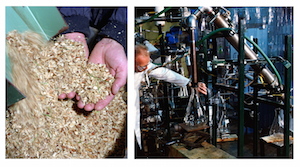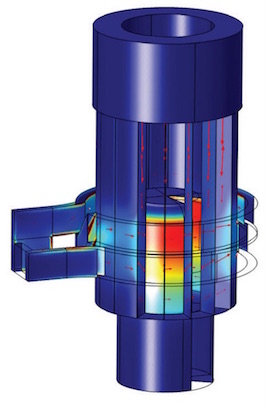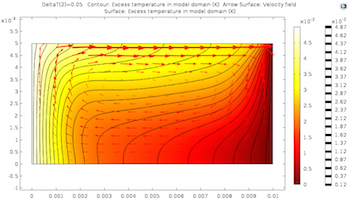Heat Transfer Blog Posts

NREL Enhances Biofuel Conversion Processes with Simulation
In an attempt to make biofuel conversion more efficient and cost effective, researchers at NREL used simulation to study and optimize such processes. Get the full story >>

Improving Phase Change Energy Storage: A Natural Approach
A research team used thermal modeling to advance the performance of a phase change energy storage system — an effective and efficient approach to conserving thermal energy.

Optimizing the Production Process for Solar Energy Cells
EMIX used simulation to optimize their cold crucible continuous casting process, an integral aspect of photovoltaic solar cell production. Get the full story >>

Modeling Marangoni Convection with COMSOL Multiphysics
When a surface gradient is temperature dependent, the Marangoni effect is called Marangoni convection. Learn how to analyze Marangoni convection in COMSOL Multiphysics®.

App: Studying a Concentric Tube Heat Exchanger’s Dimensions
The Concentric Tube Heat Exchanger Dimensioning Tool demo app is an example of what is possible when you build a simplified version of a model and share it throughout your organization.

Optimizing Heat Sink Designs with a Simulation App
The Heat Sink with Fins demo app is here to get you started with designing your own heat sink design app. Take a look at the design scenario, app, and underlying model here.

How Can I Build an Efficient Stirling Heat Pump?
Did you know that heat pumps are also called Stirling engines? These systems can operate on incredibly low temperature differences — some only need human body heat to work!

Using the Boussinesq Approximation for Natural Convection
Today, we compare the Boussinesq approximation to the full Navier-Stokes equations for a natural convection problem. We also show you how to implement the Boussinesq approximation in COMSOL Multiphysics software and discuss potential benefits of doing so.
